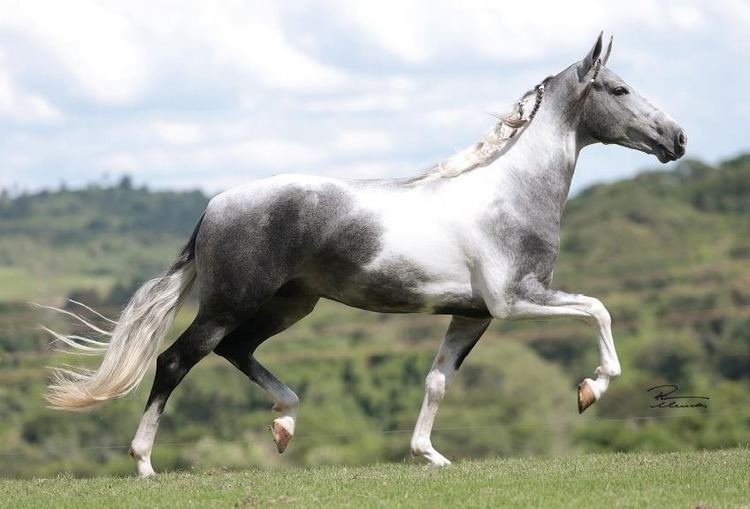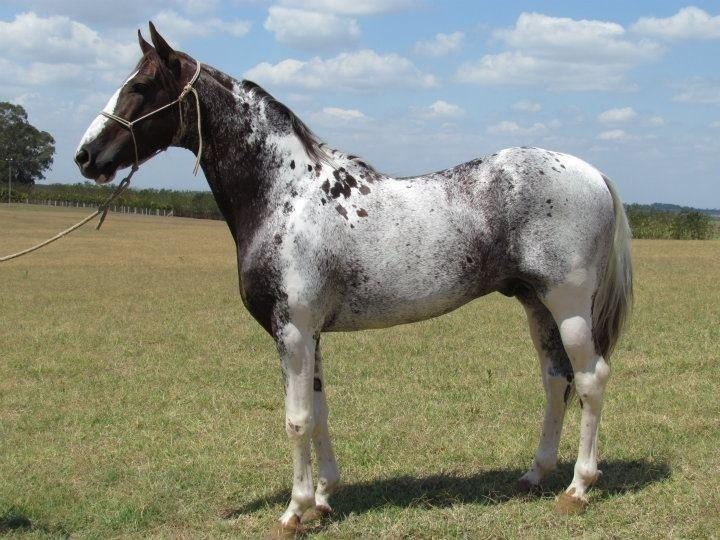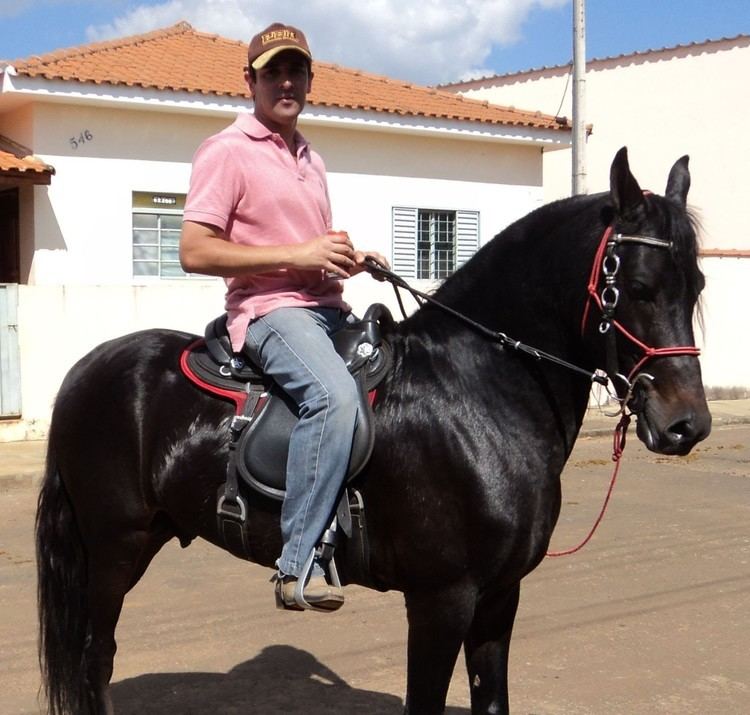Scientific name Equus ferus caballus Rank Breed | Higher classification Horse | |
 | ||
Similar Mangalarga, Pampa horse, Campolina, American Quarter Horse, Criollo horse | ||
Picture idea of horses and horse breed mangalarga marchador horse
The Mangalarga Marchador is a horse breed native to Brazil. There are over 350,000 registered Mangalarga Marchador horses in that country, in addition to those registered abroad. An Iberian breed descended from Portuguese Lusitano stallions and Barb mares, they are valued for their beauty, intelligence, disposition and smooth gaits. Mangalarga Marchadors have four gaits: walk, canter and two natural, ambling gaits—the diagonal batida and the lateral picada. They are noted for their endurance and versatility in a number of disciplines.
Contents
- Picture idea of horses and horse breed mangalarga marchador horse
- Breed characteristics
- Gaits
- Origin
- Breed split
- Today
- References

Breed characteristics

The Mangalarga Marchador is a medium-sized breed with a silky coat, prominent withers, deep chest, a proportionately-long back, muscular hindquarters, a sloping croup and hard hoofs. All coat colours are accepted for registration. For stallions the ideal height is 152 centimetres (15.0 hands; 60 in), with a range for registration from 147 centimetres (14.2 hands; 58 in) to 157 centimetres (15.2 hands; 62 in). The ideal height for mares is 146 centimetres (14.1 hands; 57 in), ranging from 140 centimetres (13.3 hands; 55 in) to 154 centimetres (15.1 hands; 61 in).

Its head is triangular in shape with a straight profile, large nostrils, ears pointing slightly inwards and large, expressive eyes. Stallions have a slight crest on their neck.
Gaits

The breed is smooth-gaited, with two natural intermediate speed ambling gaits, called marcha; the marcha batida, where the feet move diagonally, in a manner similar to a fox trot, and the marcha picada, a four-beat lateral gait, similar to a stepping pace or singlefoot. The picada, which means "light touch" in Portuguese, is usually the smoother of the two, because the lateral movement creates little vertical momentum, and is similar to the paso llano of the Peruvian Paso. Conversely, batida means "to hit", and that gait is similar to the trocha gait of the Paso Fino.

On level ground at a normal speed, the Mangalarga Marchador will overstep slightly; in other words, the hind hoofprints will cover (or slightly pass) the front hoofprints. The marcha is said by breed aficionados to be comfortable to ride. The Mangalarga Marchador does not trot or pace, moving from the marcha into a canter.
Origin

Francisco Gabriel Junqueira, Baron of Alfenas, began breeding his imported Lusitano to the mares on his farm (primarily Barbs, along with other breeds brought to Brazil when it was colonized). The result was a smooth-gaited, attractive horse which the baron called Sublime.
Junqueira sold some of the Sublimes to a friend who had a farm in Paty do Alferes, Rio de Janeiro. The farm's name was Mangalarga, and the owner rode Sublimes to and from Rio de Janeiro. In Rio, people noticed the smooth-gaited, attractive Sublimes and began calling them Mangalargas. Breeders and researchers note that until at least 1910, most ranchers involved in the breed's development (especially Junqueira Family members) followed the baron's recommendations to fix the breed's marching gait, hardiness, endurance, health and temperament.
Breed split
In 1934, the Mangalarga Breeders Association was created. Its founders wanted to establish a clear direction for breeding and define the breed's function and desired characteristics (particularly the intended gait). They had largely achieved objectives dating back to 1812-1816, when a number of breeders moved from Minas Gerais (where the breed originated) to São Paulo. They had introduced bloodlines from several non-gaited horse breeds, including the (Arabian, Anglo-Arabian, Thoroughbred, Lusitano and the American Saddlebred. These crosses were intended to adapt the Mangalarga to the local topography, with a minimal loss of gait smoothness. This blood remains in only a few female lines of the Mangalarga Marchador.
Friction developed between those who wanted to maintain the breed's original objectives and those defending the new type. The Mangalarga Breeders Association closed its stud book in 1943, nine years after its foundation. A group of breeders who disagreed with this decision met in 1948 and founded the Association Mangalarga Marchador, which became the ABCCMM. Although separate breed organizations exist for the Mangalarga and the Mangalarga Marchador and the breeds have different bloodlines and conformation, their roots are similar.
To unite differing factions and create a new stud book, the breeders turned to Geraldo Carneiro. Carneiro, a veterinarian and zoologist, was a friend and neighbor of the governor of Minas Gerais and future Brazilian president Juscelino Kubitschek and helped found a new breed association to preserve the original Marchador horse. The breeders met in Caxambu (where a Mangalarga Marchador museum is located); among those present were Joaquim Fernandes Braga (superintendent of the Minas Gerais Animal Production Department and Secretary of Agriculture, Industry, Trade and Labor) and personnel from the federal Ministry of Agriculture.
Today
With more than 350,000 horses registered, the ABCCMM is the largest registry of any type in Minas Gerais. Europe has the greatest population of Mangalarga Marchador horses outside Brazil.
The MMHAA was the first USA breed registry. Founded in 2000, it began importing foundation Mangalarga Marchador horses in 2001 but did not succeed. An ABCCMM affiliate association, the US Mangalarga Marchador association (USMMA), was created in 2004. This is the official registry of horses foaled in North America; some have dual registration with the Brazilian ABCCMM. With about 250 Mangalarga Marchadors registered with the USMMA, the breed has been featured on the Rick Lamb Show, RFD-TV, HorseTV and Horse Talk TV. They appeared in the 2002 Tournament of Roses Parade, performed in the Fiesta of the Spanish Horse at the Western States Horse Expo in Sacramento and Equine Affaire in Pomona, California, the Southern National Exposition in Perry, Georgia and Equitana in Lexington, Kentucky. There are Marchador breeders and owners in a number of U.S. states, and in 2007 the breed was introduced to Canada.
